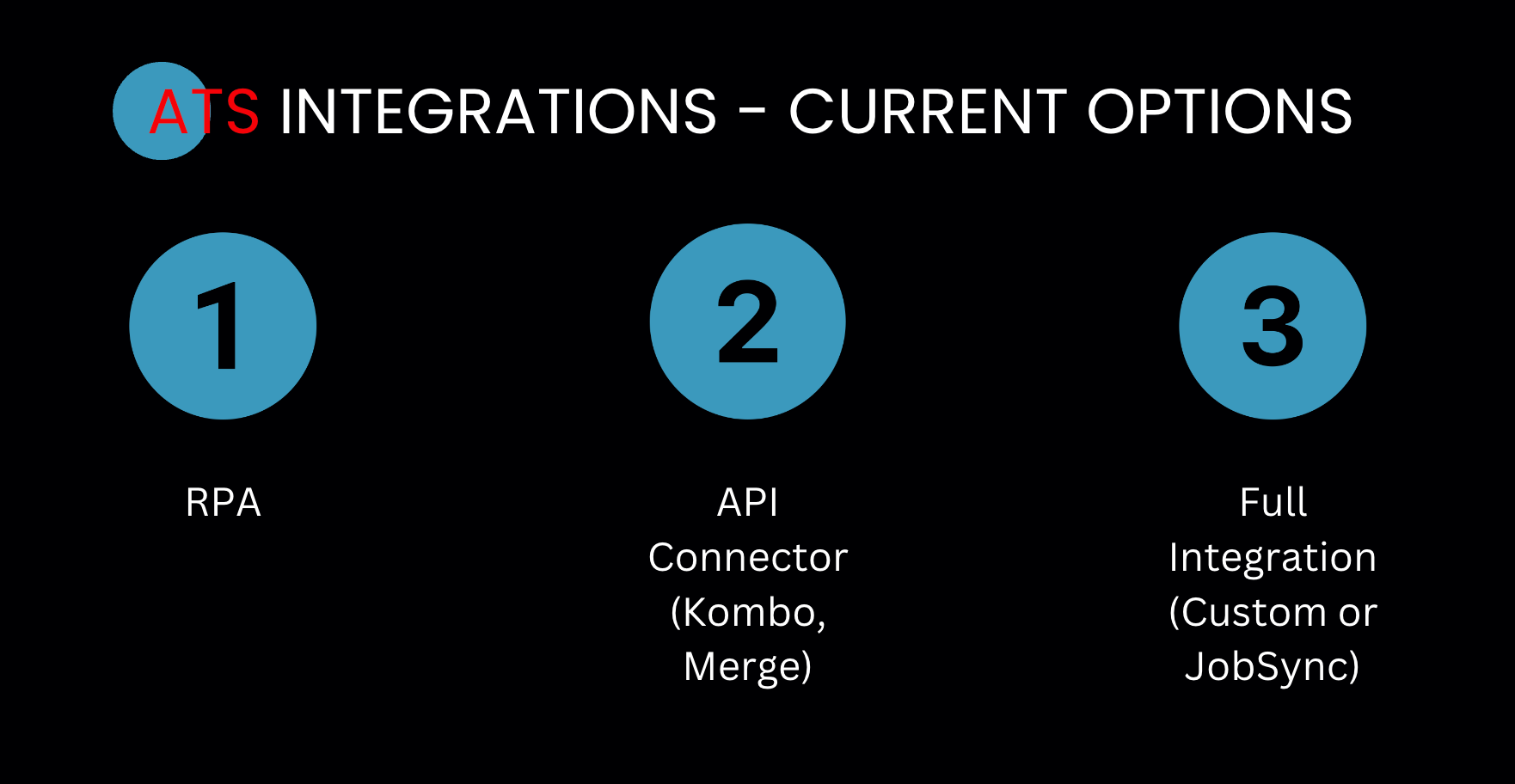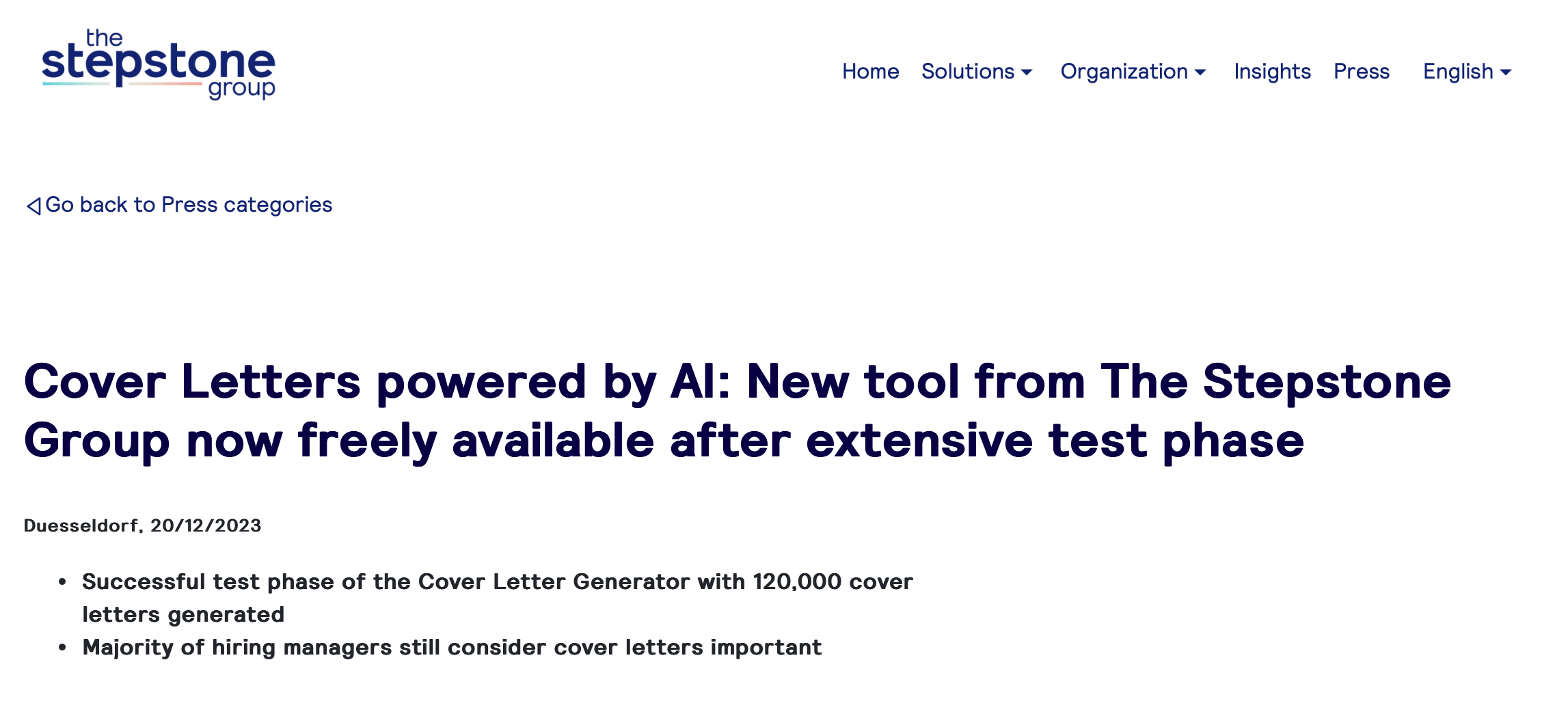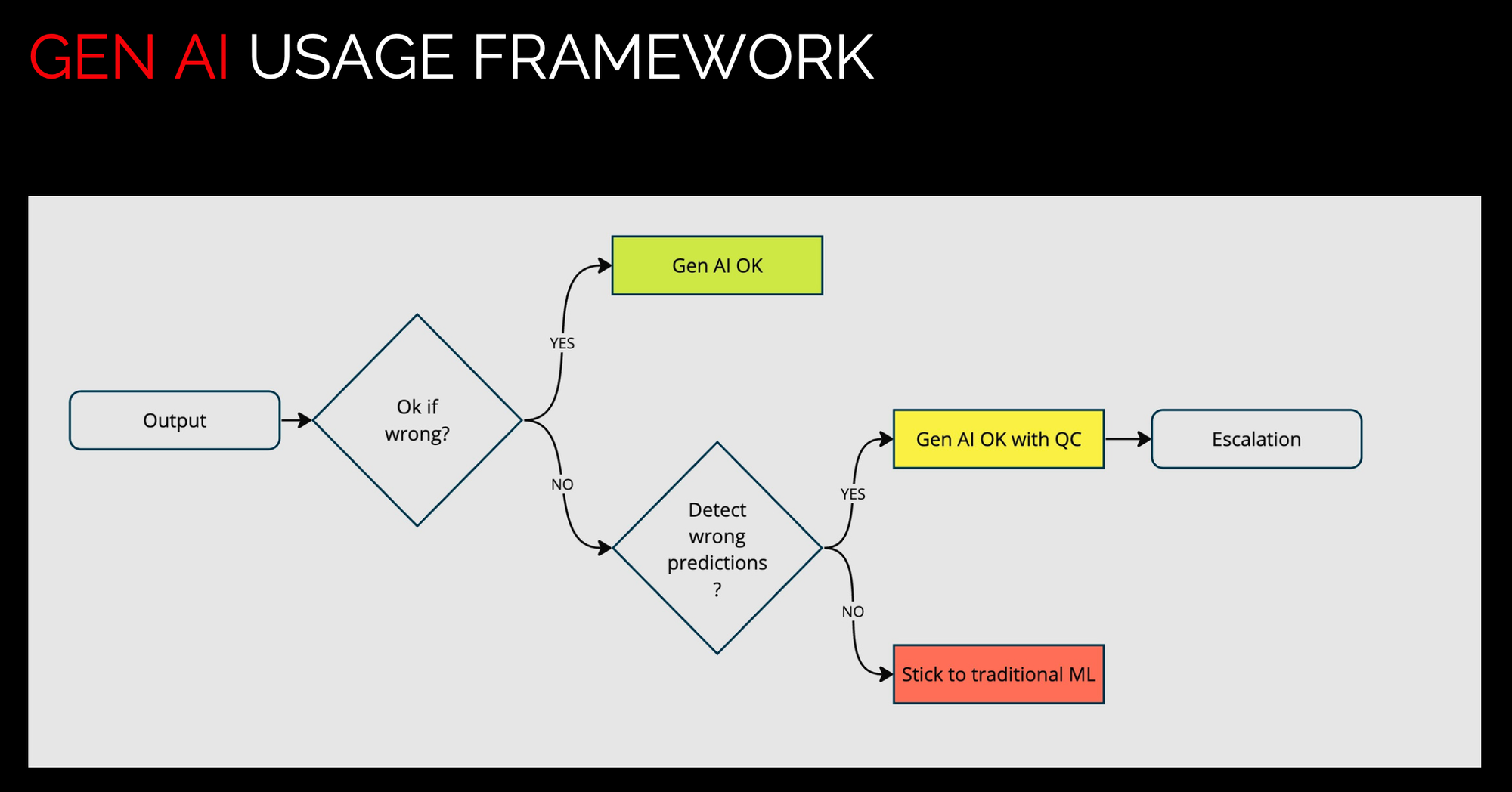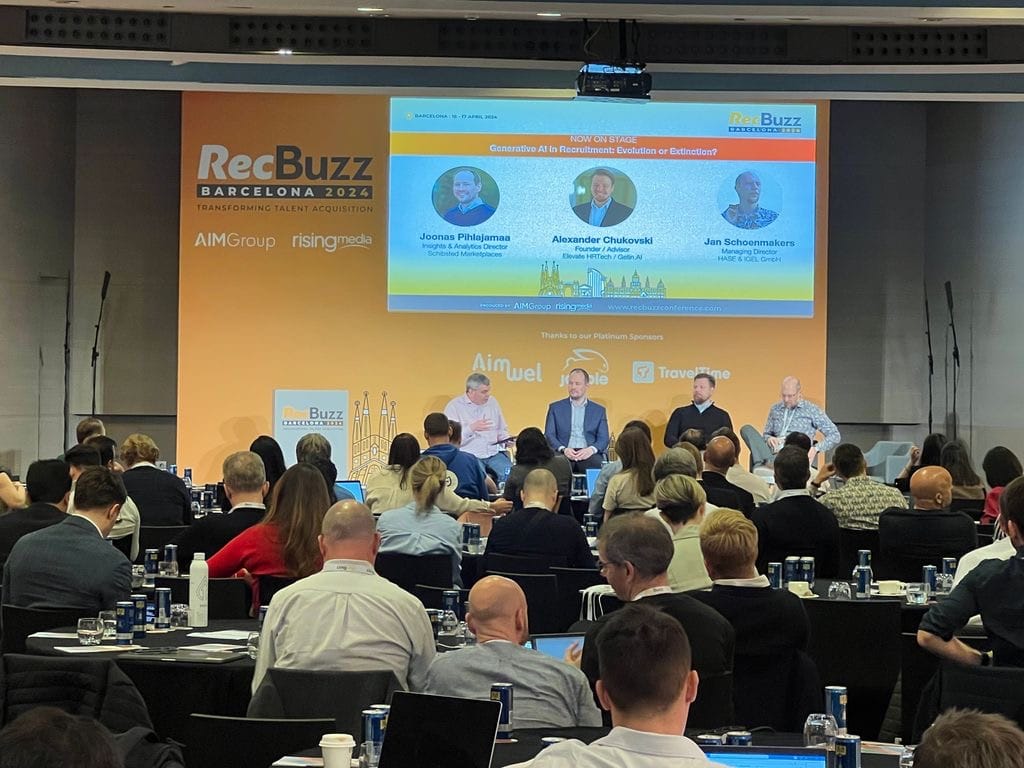RecBuzz 2024 in Barcelona - HR Tech Trends Recap

RecBuzz in Barcelona 2024 was a blast! After three full days of exciting talks, networking and some tasty drinks, it is time to take a step back and recap everything we learned during the conference.
ATS Integrations can be a game-changer for Job Boards.
Although this has been a fairly popular topic in our industry for the past ten years, we are starting to see some natural movement, partially enabled by companies like Merge and Kombo.

Integrating with an ATS and delivering applications has been a dream of job boards and aggregators for years. If done right, a job board can keep job seekers onsite and remove click-outs, but more importantly, optimize traffic acquisition by managing channels according to applications, not simple clicks.
Traditionally, integrating with an ATS is problematic for two reasons:
First, the data format differs on every ATS, thus making the integration effort very high for a single company. API connectors like Merge and Kombo normalize and map this data and allow communications via API to the ATS. These products make the integration process a lot easier.
Second, posting an application via API to an ATS requires authentication. As a job board, the challenge here is that you must go to every one of your clients, talk to them directly, and ensure they give you access to their ATS. As you can imagine, this is a tedious and slow process – the older and more enterprise the ATS is, the harder it is to set it up. There is no workaround here unless you go for RPA (robotic process automation). However, this is not an ATS integration – it uses a headless browser to fill out the form and hurts the job seeker, as applications are often incomplete or fail.
The presentation from Karriere.at, Austria’s leading job board was quite extraordinary in showing the approach they took. First, their subsidiary Hokify migrated to a 100% hosted applies and then Karriere.at followed by offering ATS integrations to customers. Currently, only 30% of jobs offer a "native" application (they call it "smart bewerben"). They also offer their own ATS for SMBs, so it is unclear how many of the 30% are “external” ATS integrations.
It is easy to force a standard when you dominate a market like Karriere. It does in Austria. Also, these entities are classic job boards; they work directly with employers, slightly different from how aggregators work today. This fact makes the ATS-integration path for aggregators without direct employers/staffing agencies as customers highly unlikely.
The speed of onboarding is also a challenge. If I remember correctly, Georg Konjovic mentioned 120 companies onboarded in one year. Is this scalable?
Commoditization of AI in HR Tech Startups
AI is no longer a novelty in HR Tech; it's becoming a transformative force, opening up new possibilities and revolutionizing our work. This should evoke a sense of excitement and anticipation among our professional colleagues.
On the first AI day, I saw many new founders with small, agile teams taking on complex tasks in our industry like Matching, Sourcing and Pre-Qualification, which is excellent. Tasks that years ago would have taken huge teams and much time can now be validated quickly with a small investment.
We are seeing AI being applied by vendors to almost every core component of job boards:
Generative AI impacts recruitment marketing, SEO, job parsing, job scraping and pre-qualification / validation of candidates. So, there will be plenty of vendors entering the market.
As an organization, evaluate AI-powered vendors thoroughly due to their growing prevalence. Failure to do so may result in poor decision-making for your organization. Don't settle for a demo or generic examples. Ensure you validate the technology offered on your data and that it is an actual use case, not a tiny sample. Doing so will help you make an informed decision and avoid potential pitfalls.
Also, remember that the adoption barrier for AI in Recruiting is still legal. Recruiters might be OK with trying AI-powered tools, but the legal and procurement departments can be bottlenecks.
Another barrier is the existing infrastructure. Companies and recruiters use technology created and connected decades ago. It is difficult to plug in new tech, and everything is still fractured.
For all new founders, I recommend looking up if what they are trying to solve has not been tried in the past so that they don't fall for the same traps. For example, company culture-based matching has been an on-and-off dream in recruiting, which is hard to build for various reasons.
Major players are making bets and rolling out AI-powered HR Tech
It is the first time in years that I see Stepstone becoming so vocal about the products they are building. It is unsurprising now that I think about their plans to IPO soon.

Large players are betting on usual, low-risk use cases along the whole attract-hire-retain value chain of HR Tech:
1. Job description generation
2. AI-Cover letter generation
3. AI-based resume optimization
4. Ai-powered matching
5. AI-generated interview questions
There is a caveat here. AI-powered matching does not necessarily use AI to match; it uses AI-extracted information from profiles and jobs to calculate a matching score. Stepstone used the term "AI enhances the precision of matching," which is a good summary. Get more data from jobs, get more data from candidates, and use it to calculate a match.
I am also very skeptical about how good job description generators can be and have voiced my skepticism multiple times.
I think that it is essential to remember that there are two ways to implement this properly:
First, you start with a job title and guide the user through a dialogue, asking for additional information and suggesting questions based on the input. For example, if a user starts with a job title Java Developer, you suggest a few skills similar to Spring.
Doing this iteratively and then compiling this information to send with your prompt can yield reasonably good results. Having a solid job taxonomy (skills, benefits, tasks, shifts) makes it even better, but let's be honest – most job boards don't have this in place.
The second option would be to fine-tune ChatGPT on a combination of user prompts and examples of good descriptions/parts of a description. This task is a bit hard because you must first define a good job description and then fine-tune vertically or, even better, fine-tune at the company level.
The best quality would be if you apply both steps. However, the effort for this will significantly outweigh the ROI of this task. In 99% of the cases, employers are unwilling to pay for job descriptions – most will prefer to copy-paste some stuff from old ads or Indeed.
As always, low risk has a second side here – it also means low rewards. None of these features feel groundbreaking or cutting-edge. They feel like building a ChatGPT plugin in 2023 – excellent for marketing, but what else?
It is still a bit unclear where AI drives value for job boards
I hosted an expert table at RecBuzz on the conference's second day. The topic was "How can AI help your business?".
One of the questions I got was about value. If AI is commoditized, what is the correct way to build MOAT? How can you differentiate yourself?
Everyone, indeed, has the same access to the same GPTs. The way to differentiate yourself is in the data you will send with the prompt, the validation/verification/guardrails steps that are custom to your process and the UX. AI-powered products require a different UX than traditional software.
Another question was how to decide when to use AI. The best way is to think of AI in a 2-step process. Step 1: can you be wrong with your predictions? If the answer is yes, great. If the answer is no, you must ask yourself: if I cannot be mistaken, can I detect wrong predictions? If you can, AI is an excellent way to go; otherwise, don't.

It also helps to break down your job board value chain into steps and write down the resources below each. After that, see if you can break down the process into input-decision-output and if you have data on these two steps. Finally, apply the methodology mentioned at the start – can you be wrong, and if not, can you detect wrong predictions? Most low-risk, high-ROI automation opportunities will be in the job processing components (job parsing, classification, extraction, mapping). Most job boards in DACH require much manual effort.
One central question was how I could ensure my AI project's success.
There is no way to guarantee this, but you must write down your KPIs and ensure you know how to track them before your team writes a single line of code. If this is your first AI project, pick a use case where you will not send sensitive user data to OpenAI. Doing so will help you avoid risks and get blocked by your legal / compliance teams.
Betting on autonomous recruiting
Agents hiring people is a huge bet – technology can autonomously source, evaluate, reach out and hire talent. The space is seeing new entrants after HollyHires started last year, and I have extensively covered this topic on Linkedin.
Empion GmbH, a Berlin-based company, is also trying to enter the market. I was not able to see anything about the tech and how they plan on doing it during their presentation, but what made tremendous logical sense is that they plan on doing this in different steps – similar to how Elon Musk wants to approach autonomous driving, there are five distinct stages of autonomous recruiting. I like this approach because it is more realistic than full-scale automation, and even if we never get to the last stage, at least it shows a roadmap.
As always, with new technology in Europe (have we adopted programmatic job advertising yet?) and specifically in Germany, the blocker will be the customer understanding the solution and the legal / procurement departments signing off on the AI risk. After all, we have the first AI Act in Europe; frankly, we already see that it will not drive adoption.
Another area for improvement with autonomous recruiting is where the profiles will come from. With LinkedIn closing down X-Ray and Twitter closing public profiles, everyone can access the same basic profiles. It would help if you went into sourcing to deliver value for customers.
New Business Models for Job Boards / Aggregators
With marketing dollars dropping in 2024, job boards and aggregators are inclined to find new ways of monetization. New revenue has been a hot topic with many clients I advise; some of them plan on launching new products.
I am surprised at what the guys at Writesea have achieved over the past two years. Talking to the team has always been a blast, but I was always skeptical in the past two years. This skepticism is gone – they have two unique products for job board operators capable of driving additional revenue.
The first product is an AI-based Resume / CV optimization tool. It is an excellent addition to any job board if you price it right and be completely honest with your customers about what they should expect.
The second product is an apply copilot, for lack of a better word. Job seekers can use it to generate interview questions, track applications, negotiate salaries, and suggest matching jobs.
Both products can be white-labeled, and I highly encourage you to look them up. Traditional Resume-writing services like TopResume were excellent in 2020, but this side of the business is slowly dying.
A second product I want to mention is Joberfer from Prasanthi Naidoo, whom I got the chance to meet in person during the conference. Job recommendations are complex and have been tested by startups multiple times, but this concept has a refreshing take on UX and business models. Also, Prasanthi is a job board owner (https://www.healthjobhub.com), so her advantage is that she understands our industry.
We will see more products emerging and driving new revenue opportunities for job boards in the future, and AI will be an enabler for this.
PS – I have no affiliation with WriteSea or Joberfer, and this text has been solely written based on my experience talking to the founders and getting a demo of the product.
Job Boards are not dying yet…but they still have to evolve.

Jonathan Turpin moderated an exceptional session on the "Impact of Generative AI in Recruitment – Evolution or Extinction for Marketplaces." Together with Joonas Pihlajamaa from Schibsted and Jan Schoenmakrs from HASE & IGEL, we got into an exciting conversation about the future of job boards and aggregators.
The main takeaway from this session is that marketplaces will evolve and have already started to. Look at companies like CV-Wallet, which adds a verification layer between the candidate and the employer. Automation goes both ways, and AI will impact both sides.
I also see that marketplaces will become strict with their data – we will probably see incumbents launch more database and profile products. With LinkedIn and Twitter closing for logged-out visitors, having a quality database of candidates can be a huge strategic advantage.
At the same time, adopting AI will not be so fast in Europe – we have both the AI Act and a generation of recruiters who are not yet as technically affine as we often like to think of them. Even if they are open to AI, the legal department will carefully evaluate every tool, blocking adoption.
Let's not forget the candidates – they also have preferences. Not everyone will interview AI avatars or talk on the phone with AI bots.
As always, technology adoption goes both ways.
Summary
All in all, RecBuzz in Barcelona was an exceptional conference with great content and exciting networking opportunities. Thanks to the AIM Group team - Katja, Peter,.Jonathan, Nadine and Jess, thank you for organizing this exceptional event. If you work in HR Tech, I highly recommend visiting RecBuzz annually.